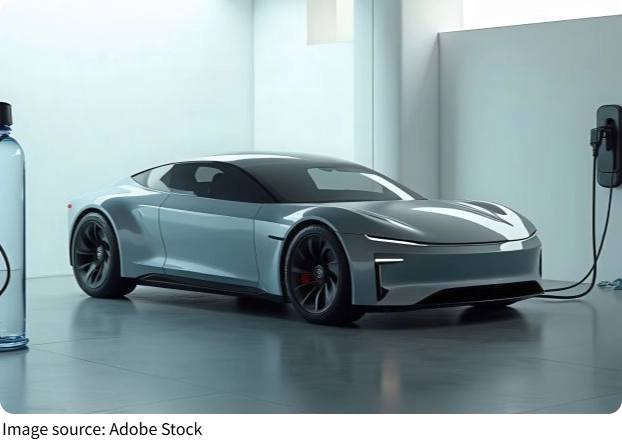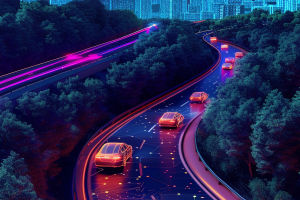Autonomous Delivery Rise

We've all experienced the thrill of receiving a package or food delivery—whether it's a hot chicken pizza or the latest gadget we've been eagerly waiting for. But have you ever thought about how that delivery reached your door?
Autonomous delivery vehicles, from drones to self-driving cars, are changing the game. These vehicles are quickly making their way into the logistics sector, reshaping how businesses deliver products and how we, as consumers, interact with services.
Let's dive into how this revolution is unfolding and what it means for us.
The Rise of Autonomous Vehicles in Delivery
When we think of autonomous vehicles, many of us immediately picture futuristic self-driving cars cruising down the highway. But these vehicles are already transforming the delivery industry. Big companies and even smaller startups are experimenting with or already deploying autonomous delivery vehicles. From robotic delivery bots that travel on sidewalks to drones delivering packages from the sky, the possibilities are endless. These innovations are driven by the need to improve delivery efficiency, reduce costs, and minimize human error.
For example, in urban areas, autonomous delivery vehicles are becoming an increasingly popular way to move goods quickly, especially for last-mile deliveries. These vehicles are designed to navigate neighborhoods, avoiding traffic and taking the most efficient routes to deliver packages to consumers within minutes.
How Autonomous Delivery Vehicles Are Reshaping Logistics
We all know that logistics and delivery play a crucial role in e-commerce and local businesses. The rise of autonomous vehicles is having a profound impact on how goods are transported. With traditional delivery methods relying on trucks and human drivers, there are inherent challenges—traffic congestion, fuel costs, environmental impact, and a shortage of drivers. Autonomous vehicles are addressing many of these issues by using cutting-edge technology to reduce human intervention.
Take the example of autonomous delivery drones: these vehicles can bypass road traffic and deliver products more directly. In rural areas, where deliveries can take hours, drones are slashing delivery times significantly. With this type of technology, we're witnessing a shift from large, fuel-hungry trucks to lightweight, energy-efficient machines. This change has the potential to cut emissions and reduce the carbon footprint of the delivery sector.
How Businesses Are Adapting to the Change
As autonomous vehicles begin to revolutionize delivery systems, businesses are keen to adapt. Major companies like FedEx, Uber, and Postmates are heavily investing in autonomous vehicle technology to streamline their operations. By leveraging these new delivery methods, companies can lower their operational costs, reduce delivery times, and provide customers with an enhanced experience.
We've all seen the rise of "food delivery apps," but as autonomous vehicles take over, these services are set to become even more efficient. With fewer human drivers, companies can reduce the cost of wages and even overcome labor shortages, a growing issue in many industries. What's more, autonomous vehicles can operate round the clock, ensuring faster delivery times, even during off-peak hours.
Consumer Behavior: How We'll Experience Deliveries in the Future
What does this mean for us as consumers? Well, for one, it means faster and more reliable deliveries. Imagine ordering a last-minute gift for a loved one and having it arrive at your doorstep within the hour, thanks to an autonomous drone or self-driving car. We're also likely to see a more seamless, convenient experience, with real-time tracking of our deliveries through mobile apps. This heightened level of efficiency could eventually reduce delivery fees, which would be a win for all of us.
As autonomous delivery vehicles become more commonplace, we will witness a fundamental shift in how we perceive transportation. We're moving towards a future where deliveries are made faster, cheaper, and more sustainably. No more waiting for days for an item to arrive—autonomous vehicles are making sure goods reach us when we want them.
The Challenges Ahead: Regulation and Safety
While autonomous delivery vehicles have a lot of potential, there are still many hurdles to overcome. The biggest challenges lie in safety, regulation, and public acceptance. Since autonomous vehicles are still a relatively new technology, lawmakers and city planners need to create new policies to ensure their safe integration into public spaces. For example, concerns over the safety of autonomous delivery drones flying over our heads need to be addressed. Similarly, autonomous vehicles on the ground must follow traffic laws and be able to interact with human drivers safely.
In terms of consumer acceptance, there's still some skepticism. Many people may be hesitant about trusting a machine with their deliveries. However, as more people experience the convenience and efficiency of these systems, we'll likely see a shift in public opinion.
The Future of Autonomous Delivery Vehicles
We are only beginning to scratch the surface of what autonomous delivery vehicles can do. Over the next few years, we can expect to see widespread adoption of these technologies in cities around the world. For businesses, this means fewer logistics headaches, faster service, and reduced operational costs. For consumers, it means quicker, more efficient deliveries that fit perfectly into our fast-paced lifestyles.
As we continue to embrace the digital age, autonomous delivery vehicles will play an essential role in shaping the future of commerce and transportation. Who knows? The next time you order food, it might just arrive at your door by drone!

The rise of autonomous delivery vehicles is just one example of how technology is reshaping our world. As we move forward, we can expect more industries to adopt similar innovations, revolutionizing everything from transportation to retail. Whether you're excited about the prospect of faster deliveries or curious about how the technology will evolve, one thing is certain: autonomous vehicles are here to stay, and they're changing the way we experience the world.
What do you think about autonomous delivery vehicles? Are you excited for faster deliveries, or do you have concerns? Let's chat in the comments below!


